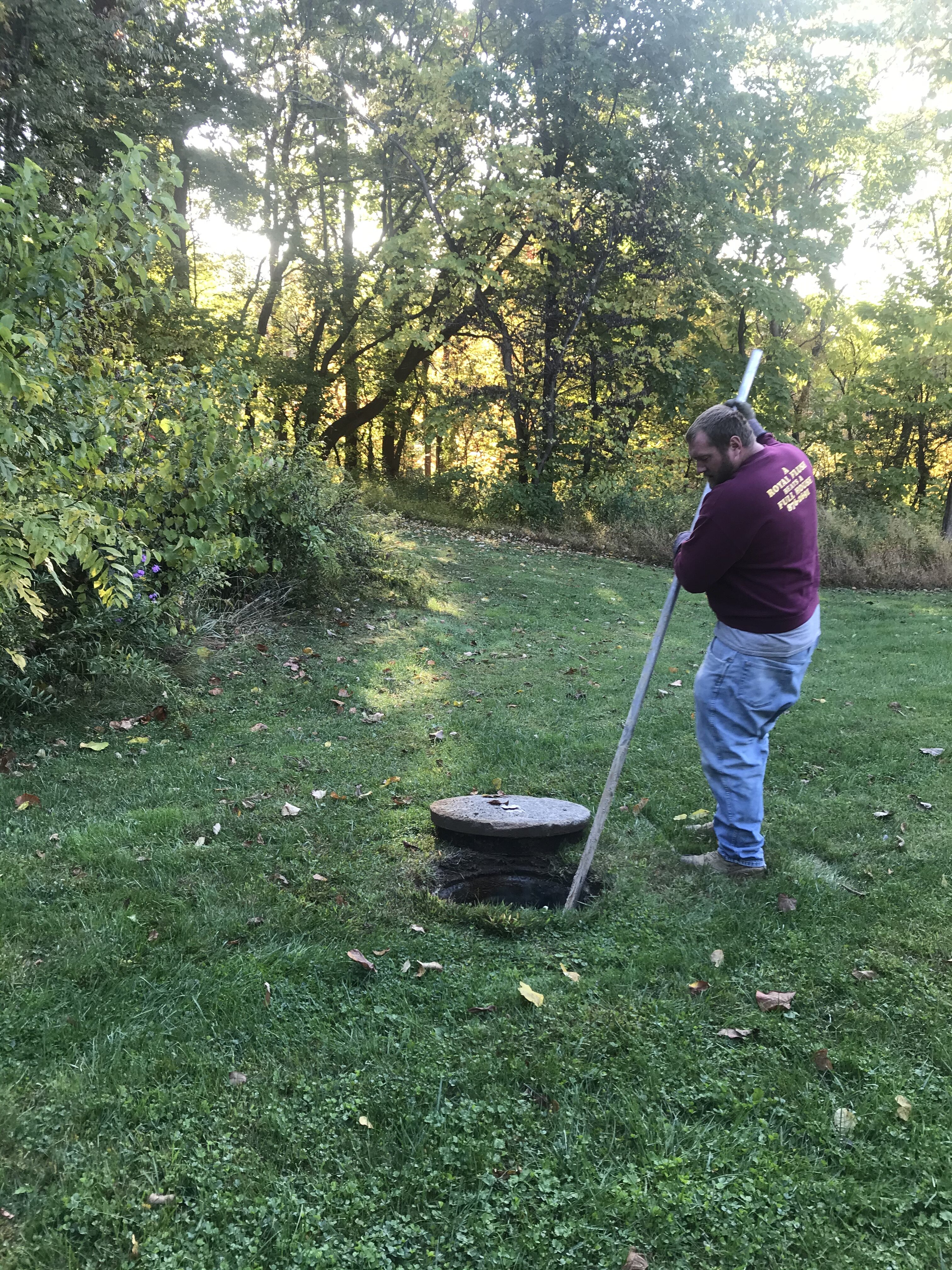
Septic scoop: A visit from royal flush
Everyone poops. But not everyone knows how to take care of a septic system. Or even what a septic system is. If you own a house in an area without municipal sewer access, you need to know. Otherwise you could be up *rhymes with pits* creek.
The name of our septic service provider, Royal Flush, gave me a chuckle when I first heard it from our realtor, Patty Hinkein, in 2007. It turns out the abandoned house we were in the process of buying didn’t have a septic. Or anything else, except an ancient terra-cotta pipe exiting off the back of the house from the one indoor bathroom. It seemed to empty downhill towards the kill (stream) that runs through our property…and our neighbors’ properties. Ick.
So, we learned a lot about septic systems in those first few months of home ownership. How it can cost a few thousand, or a few ten thousands, dollars to install a new one, depending on your soil type and how well it “perks”. How a septic field needs to be 100 feet away from your well to avoid potentially contaminating your water source. How it helps to know exactly where your well is (we did not). How you need to be careful what you flush – only septic-safe TP and natural bodily emissions (there’s really no delicate way to say that, is there?). And how you need to have the system serviced regularly.
Our modern, 1000-gallon, concrete septic tank can go about five years before “the solids” need to be cleaned out – and that’s just what they do. See the hose? That truck is like a giant wet vac. And then we’re good to go for another few years. Not that the tank doesn’t fill up again. It does, but most of the waste flows out into a sub-grade drainage field – a part of our yard that we can still walk on and keep mowed, we just can’t build on it. And as long as it doesn’t smell, look squishy, or start growing abnormally lush plants, we know it’s working fine.
Here’s a good, detailed explanation of how most septic systems work.
A visit from Royal Flush is a periodic reminder that even “new” systems need maintenance. With houses, there’s no “one and done”. And what better way to connect viscerally with your home? Happy flushing!
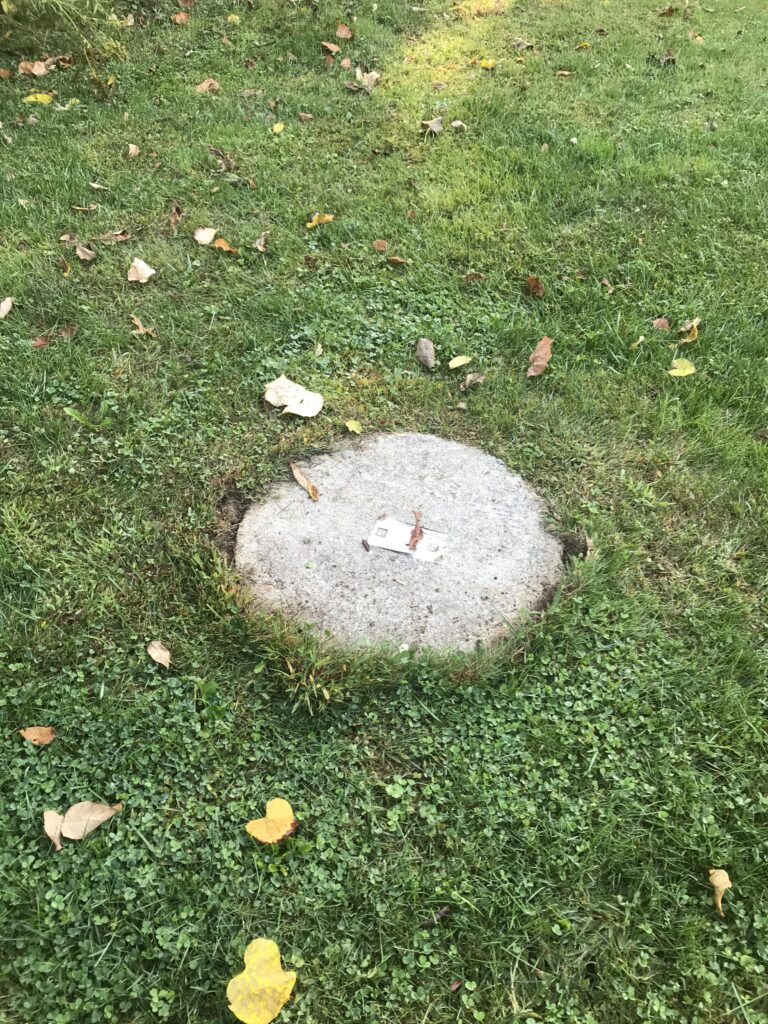
Tank lid 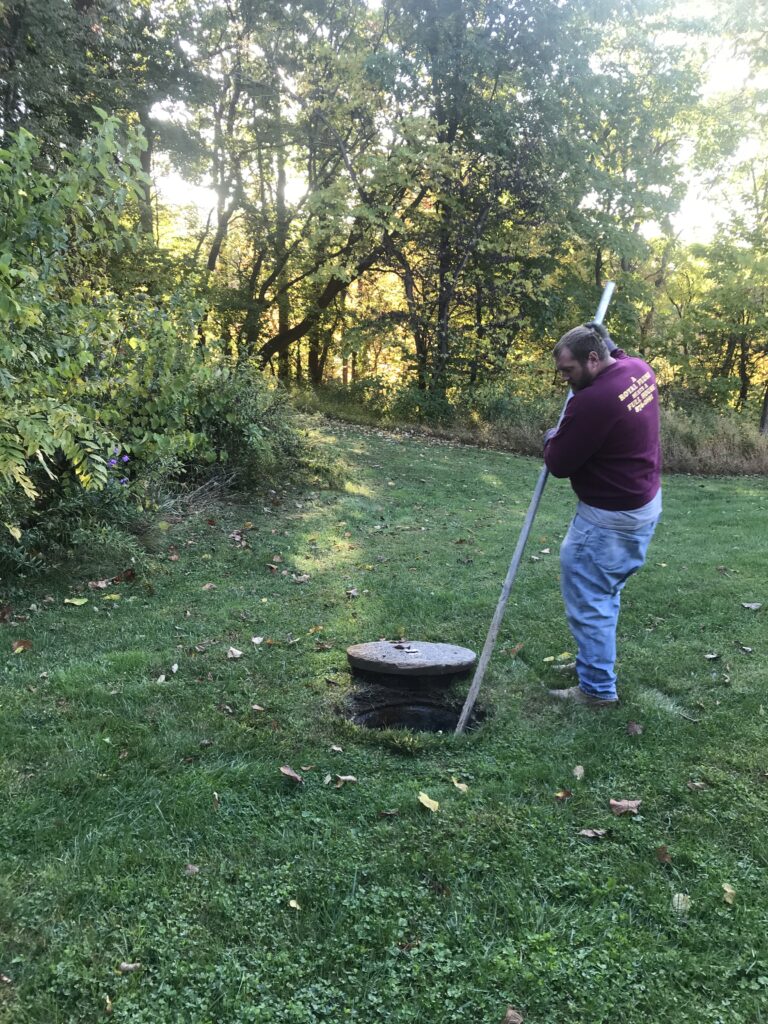
Poking around 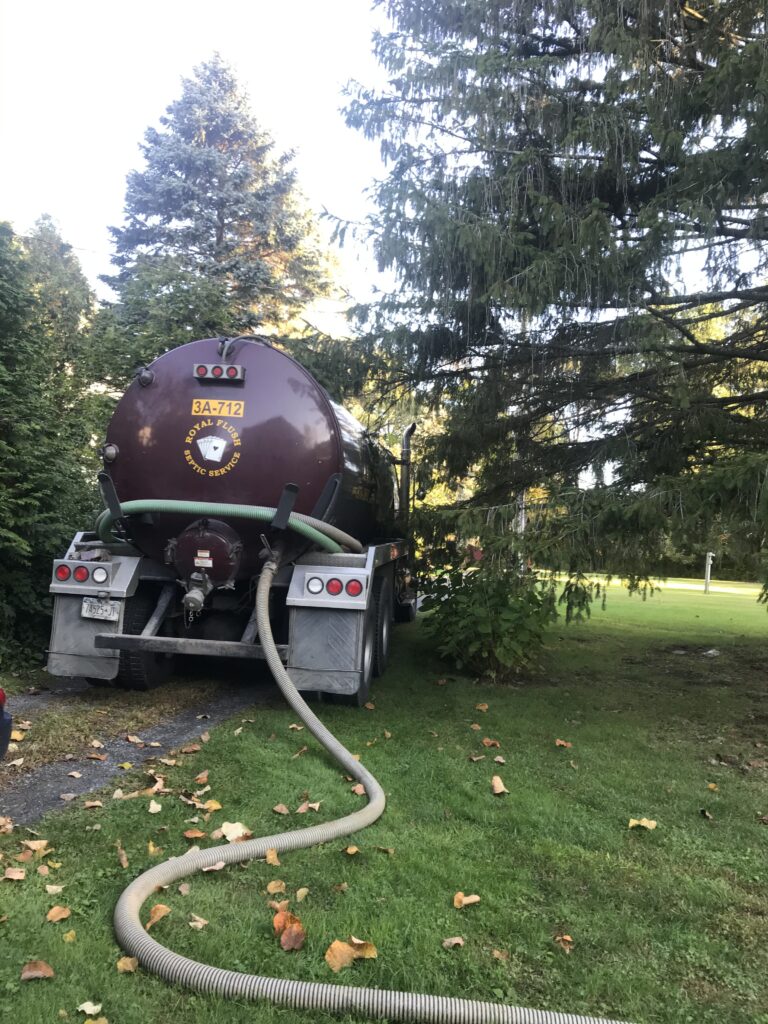
One end of the hose 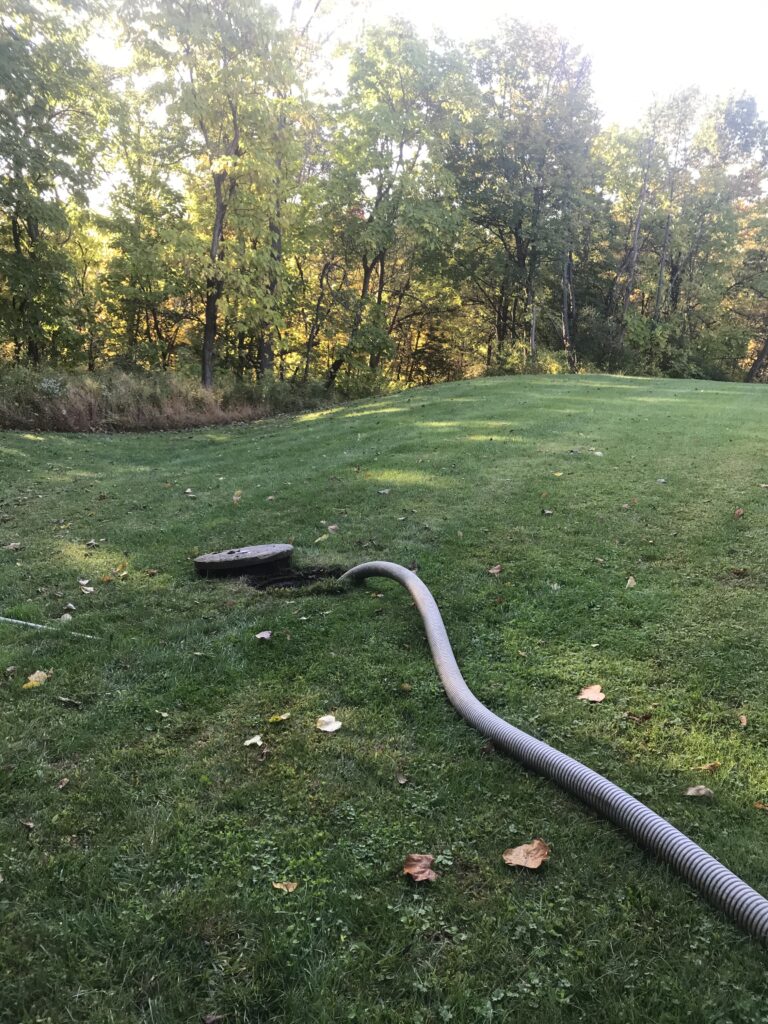
The other end of the hose


